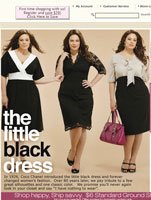New Technology, Real Estate Prices Drive Retailers Online
Thanks to improved technologies and new concepts, online retailing is looking more attractive to some than traditional retailers, and going Web-only is becoming a more attractive option, said several e-commerce resources.
Web-only retailers make up about 55 percent of all online sales. Initially, retailers looked to e-commerce as more of a tool to build their brands and drive business to their freestanding and mall stores, but given the success of Web-only vehicles such as www.shoplastyle.com) and RevolveClothing.com, there’s more of an argument to stay on the Internet and off of Main Street.
Henderson, Nev.–based Zappos is among those that have proved that a physical store presence is not a necessary ingredient for retail success. Zappos, which originally launched in San Francisco, has seen its growth go from zero in 1999 to a projected $1 billion this year. The company started as a shoe retailer but now has an ample supply of denim, T-shirts and ready-to-wear. Success has come through offering one of the biggest selections available and from repeat business.
Even in a receding economy, e-commerce is showing some staying power. According to a recent study by the National Retail Federation’s Shop.org division, e-commerce sales will top $200 billion this year at a growth clip of 17 percent. Online sales will account for 7 percent of all U.S. sales this year, up from 6 percent last year, according to the report, which was undertaken by Forrester Research Inc.
“Even in 2008, when retailers in general are expected to encounter challenges with growth due to uncertain or adverse economic circumstances, we project that online retail will continue to erode market share from other channels,” said Forrester researchers. Half of online retail sales in 2007 came from five categories: apparel, accessories and footwear; computer hardware and software; autos and auto parts; consumer electronics; and home furnishings. The apparel category, which surpassed computer gear for the first time in 2006 as the top online sales category, is projected to hold onto the top spot again in 2008, accounting for $26.6 billion in sales, up 17.2 percent from $22.7 billion last year.
Steve Oprian, who operates AmoreFashion.com out of Orange County, Calif., said being Web-only has its advantages, especially in the current economic climate.
“Your revenue goals aren’t as high, so you have a greater chance of staying in business online than others,” he said. The company recently expanded into home accessories and gifts.
Oprian explained that consumers are dictating where the retail sales are based. More than half of American households have broadband access now, and technology has improved, he said. Other payment platforms that enable customers to withdraw from their checking account or pay later have emerged. The Internet is no longer a credit-card-only domain, he said.
Retailers such as Zappos are now armed with technology that reports inventory levels in real time, so consumers know what is available when they click a button to purchase an item.
Other retailers are taking advantage of new e-tail concepts such as microsites and social networking. Juniors retail chain The Wet Seal is among those that have joined the social-networking fray. Microsites are spin-off sites that are used as testing ground for new retail concepts and products.
Invitation-only sites such as Rue La La (www.ruelala.com), which conducts private sales for its members, are also proliferating and are Web-only events.
Back to bricks-and-mortar
With all the innovations on the Web, there’s still no substitute for face-to-face meetings with customers, said Kim Khanbeigi, president of Anaheim, Calif.–based plus-size resource Kiyonna Clothing. After 11 years operating as a wholesaler and e-commerce retailer, the company opened its first store above its corporate headquarters last November.
The store has been a welcome addition, Khanbeigi said.
“It’s been wonderful,” she said. “We launched our Web site in 1999. We received lots of press, which is great. At the same time, you don’t see the customer. There’s something to be said about analytics derived from online visits, but when you actually see the people who buy your clothes, it’s great. You see how it fits on real women.”
Cerritos, Calif.–based RevolveClothing.com built its success on the Internet—and has seen e-commerce evolve as more and more manufacturers recognized e-tail sites as legitimate retailers.
In the past, e-tailers had to work harder to get the attention of apparel manufacturers, many of whom didn’t always recognize Web-only stores as an important outlet for their lines, according to co-founder Mike Karanikolas.
“Most companies now recognize the importance of the Web as its own important distribution channel that can support and enhance the company’s brand,” he said. Now the company will try its hand as a multi-dimensional retailer as it prepares to open its first freestanding store on Melrose Avenue in Los Angeles this fall, Karanikolas said.
“The main pro of being a Web-only retailer is that your attention is not distracted from the Web store,” he said. “It is the only thing you do, so you must do it well, and you can put all your attention on making it succeed.”
Many bricks-and-mortar stores treat their e-commerce unit as an afterthought, Karanikolas said, adding that he worries that the bricks-and-mortar store will take the focus off his successful Web business. Similarly, he said, the company waited to open a physical store until it could give the bricks-and-mortar side of the business “the attention it needs to make it a great store.”
“Although we investigated opening a physical store over three years ago, we have waited to do so for that very reason,” he said. “We didn’t want to do it if we couldn’t do it well and commit a lot of time and energy as an organization to make it a success.”
























